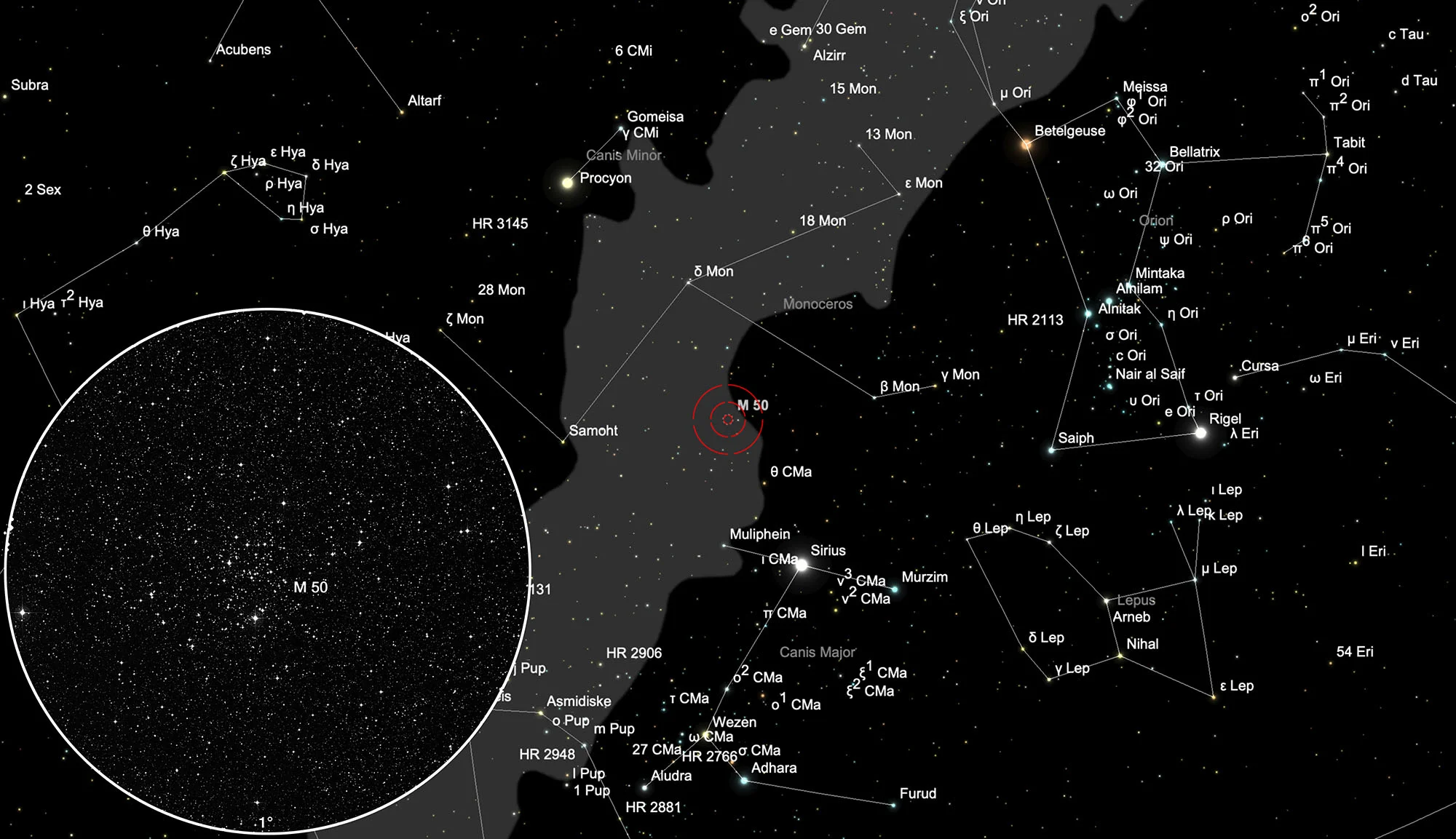Open Cluster Messier 50

History
The star cluster was discovered in 1709 by the Italian astronomer Giovanni Cassini. When Charles Messier observed Comet Biela on 5 April 1772, he encountered the star cluster again. In order to avoid confusing such nebulous stars with comets in the future, he added it as the 50th object on his list. The German astronomer Johann Bode found the star cluster again on 12 February 1774 when he was looking for Cassini's observation.
Physical Properties
M 50 is of the Trumpler type II3m and about 10 minutes of arc in diameter. A few further outlying stars reach up to 20x15 arc minutes. About 200 stars belong to the cluster. Robert Burnham Jr. describes «curving arcs of stars make a heart-shaped outline, nicely highlighted by a single reddish star about 7' south of the centre of the cluster». Distance measurements give a distance of 881 pc to 902 pc (2873 to 2942 light years). The true diameter of the cluster is therefore about 9 light years. [4, 145, 196]
| Designation | NGC 2323 |
| Type | OCL (II3m) |
| Right Ascension (J2000.0) | 07h 02m 47.8s |
| Declination (J2000.0) | -08° 22' 33" |
| Diameter | 15 arcmin |
| Visual magnitude | 5.9 mag |
| Metric Distance | 0.881 kpc |
| Dreyer Description | ! Cl, vL, Ri, pC, E, st 12…16 |
| Identification, Remarks | h 425; GC 1483; M 50; OCL 559 |
Finder Chart
M 50 lies in the constellation Monoceros. It is located approximately on the first third of the line Sirius (α Canis Majoris) - Procyon (α Canis Minoris), or approximately in the middle of Sirius (α Canis Majoris) - δ Monocerotis. The best time for observation is September to June.
